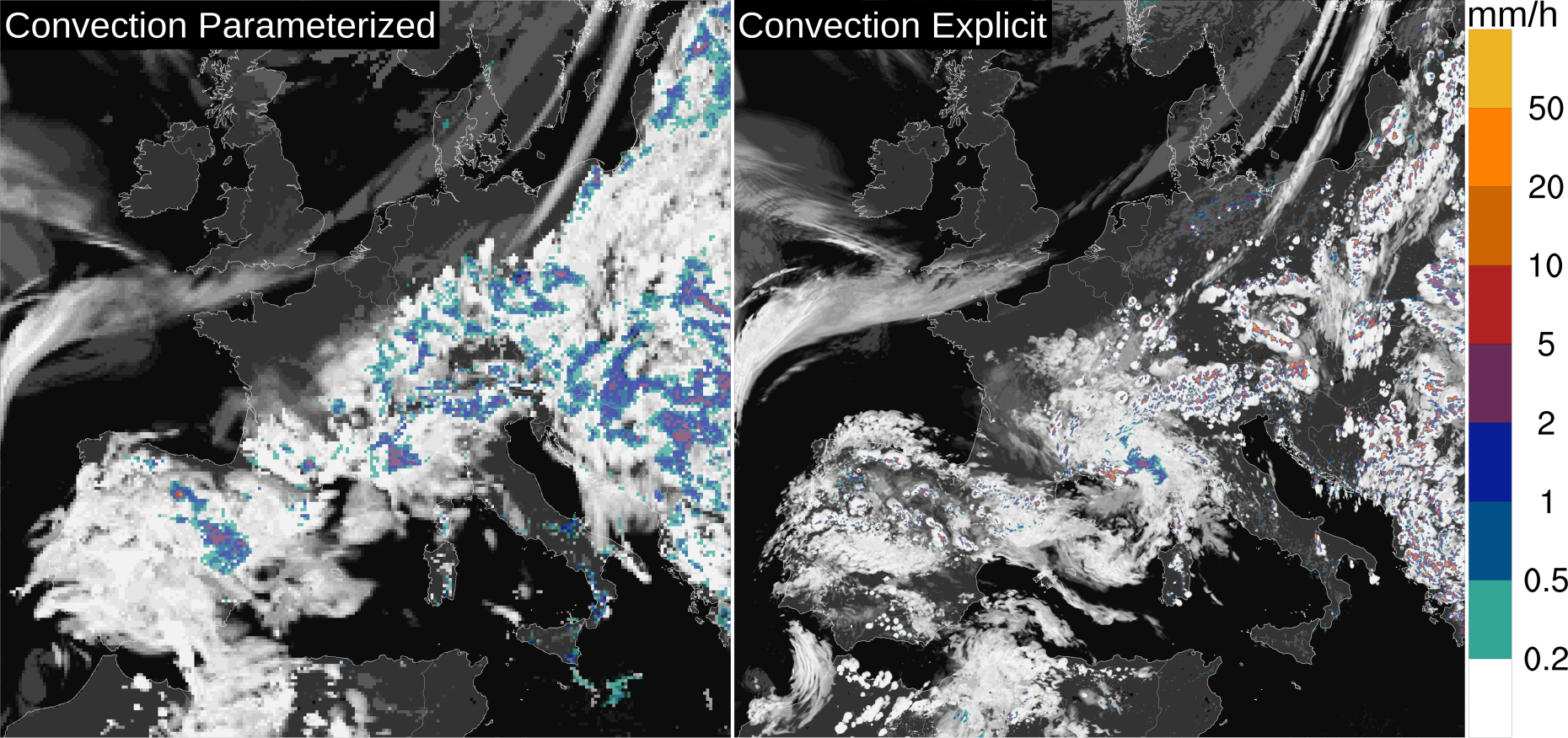New supercomputers allow convection-resolving climate simulations
ETH scientists perform a Pan-European climate simulation using a computational mesh fine enough to simulate thunderstorms and rain showers.
Using a new version of the weather and climate model COSMO, capable of using novel supercomputers employing GPU accelerators, external pageLeutwyler et al. (2017)call_made performed a 10-year-long climate simulation at 2.2 km resolution on a domain covering continental Europe (1536x1536x60 grid points). The paper has been selected as a publication highlight by external pageAGUs Earth & Space Science Newscall_made.
Thunderstorms and rains showers (deep convection) are difficult to simulate in today’s climate models. The computational meshes employed today are usually too coarse (10-200 km) to catch the associated small-scale motions. Therefore, these models treat deep convection using physically-based semi-empirical parameterizations. In the current study the grid spacing is refined to the kilometer scale, which allows switching off these parameterizations and thus formulating the model much closer to physical first principles.

Links:
- Leutwyler, D., D. Lüthi, N. Ban, O. Fuhrer, and C. Schär (2017), Evaluation of the convection-resolving climate modeling approach on continental scales, J. Geophys. Res. Atmos., 122, external pagedoi:10.1002/2016JD026013call_made
- Publication highlight by AGUs Earth & Space Sciene News: external pageNew Supercomputers Allow Climate Models to Capture Convectioncall_made
